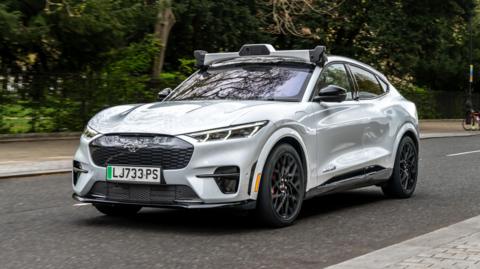I was in a Ford Mach-e, fitted with Wayve's autonomous driving sensors and software.
It uses a radar and seven cameras. In the boot there's is a computer which is running the AI-driven software that processes all that sensor data in real time and controls the car's responses.
The automated tech handled every scenario without a hitch, including pedestrians in the road, parked cars, heavy traffic, temporary traffic lights and delivery bikes.
George, our safety driver, did not touch the controls once and a big red button, which shuts off the automated system immediately, was not deployed.
If anything the robo-ride was a far more patient city driver than I am – and has no voice, making it a lot less chatty.
Whether autonomous vehicles are more or less safe than human-driven ones is still being investigated.
But numerous studies suggest that automated vehicles are less accident-prone than human drivers, based on US data.
But there have been a number of incidents involving robotaxis in the countries where they operate, ranging from road accidents to passengers being locked in.
In January, a man in Arizona, in the US, documented how his robotaxi drove round in circles in an airport carpark, with him trapped in the vehicle, unable to stop the car or get help.
General Motors paused its driverless taxi service Cruise in San Francisco in 2023 because of safety concerns.
"The reality is that one accident is too many," said Uber's Mr Macdonald.
"That said, with EV (electric vehicles), human drivers… we operate in the real world and stuff happens."
In the UK there are also practical questions around insurance, ownership and liability when a self-driving vehicle is involved in an accident. Mr Macdonald said they were all still being worked out.
